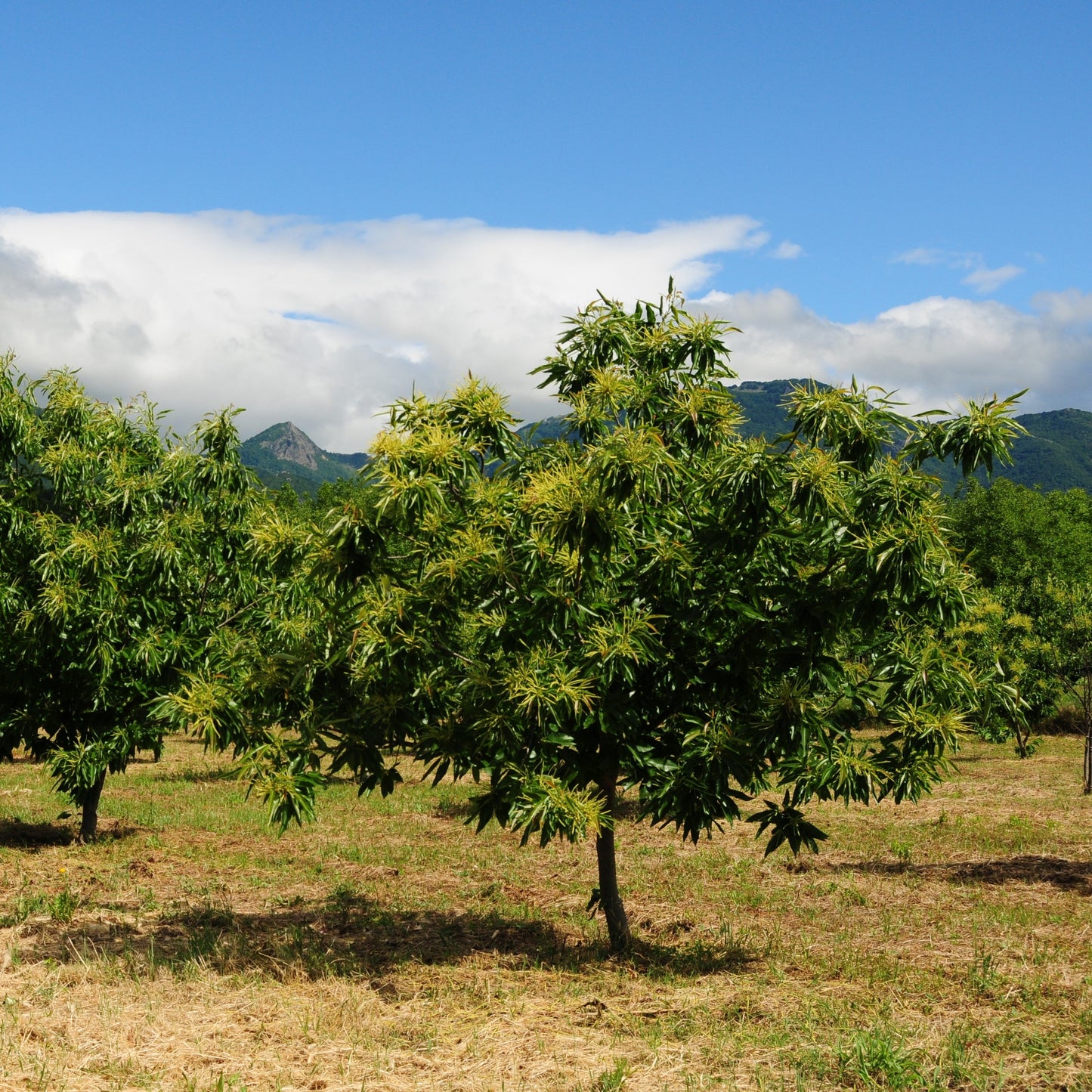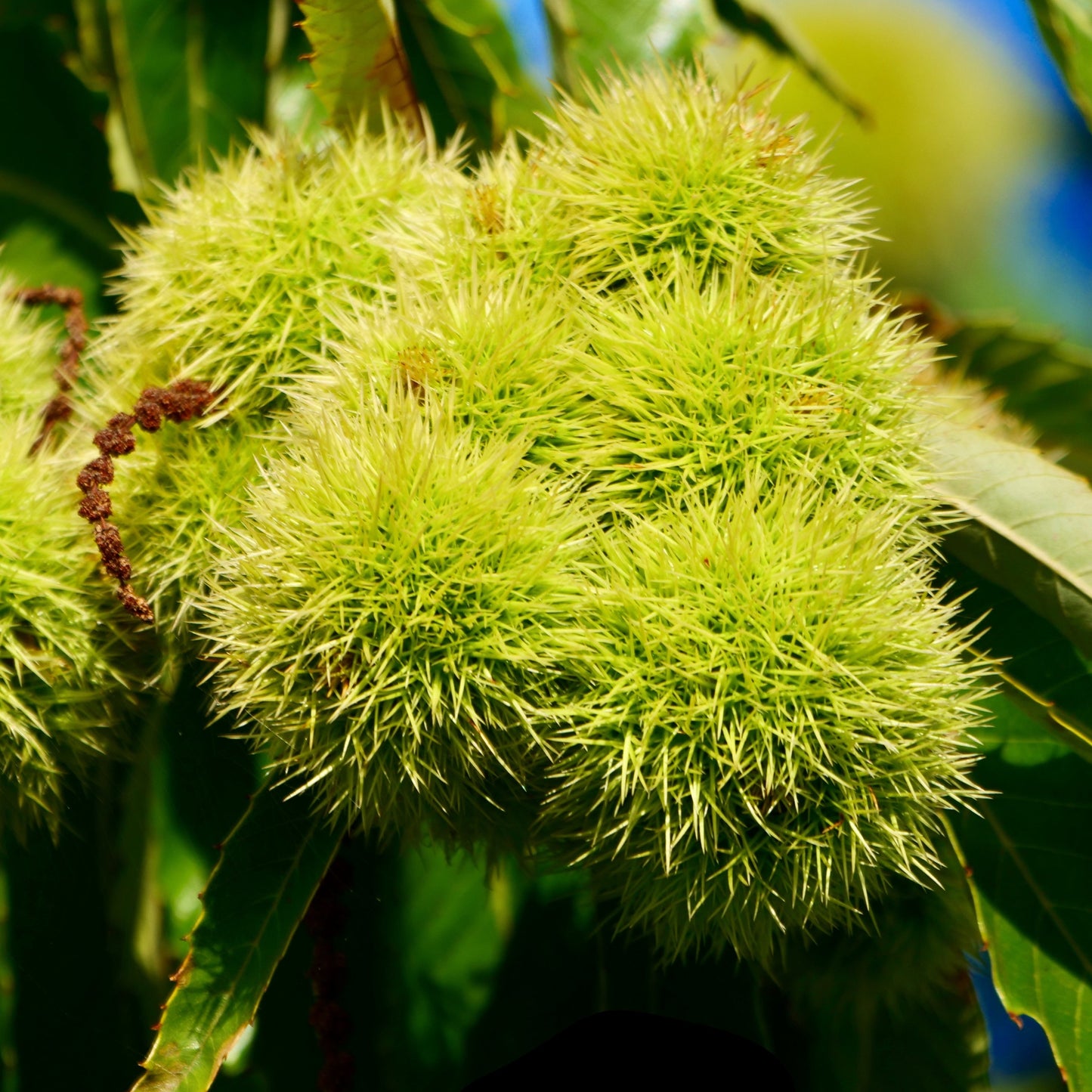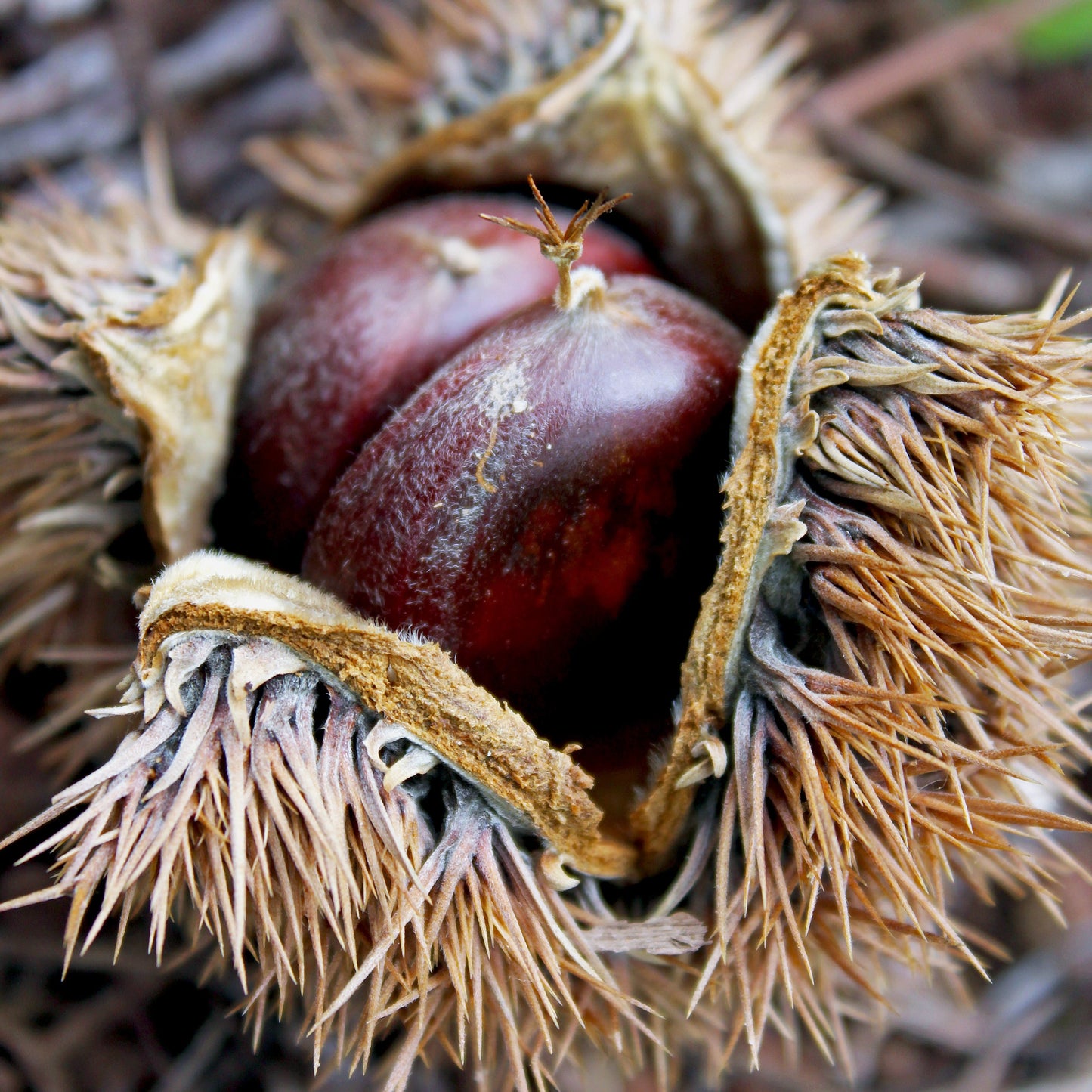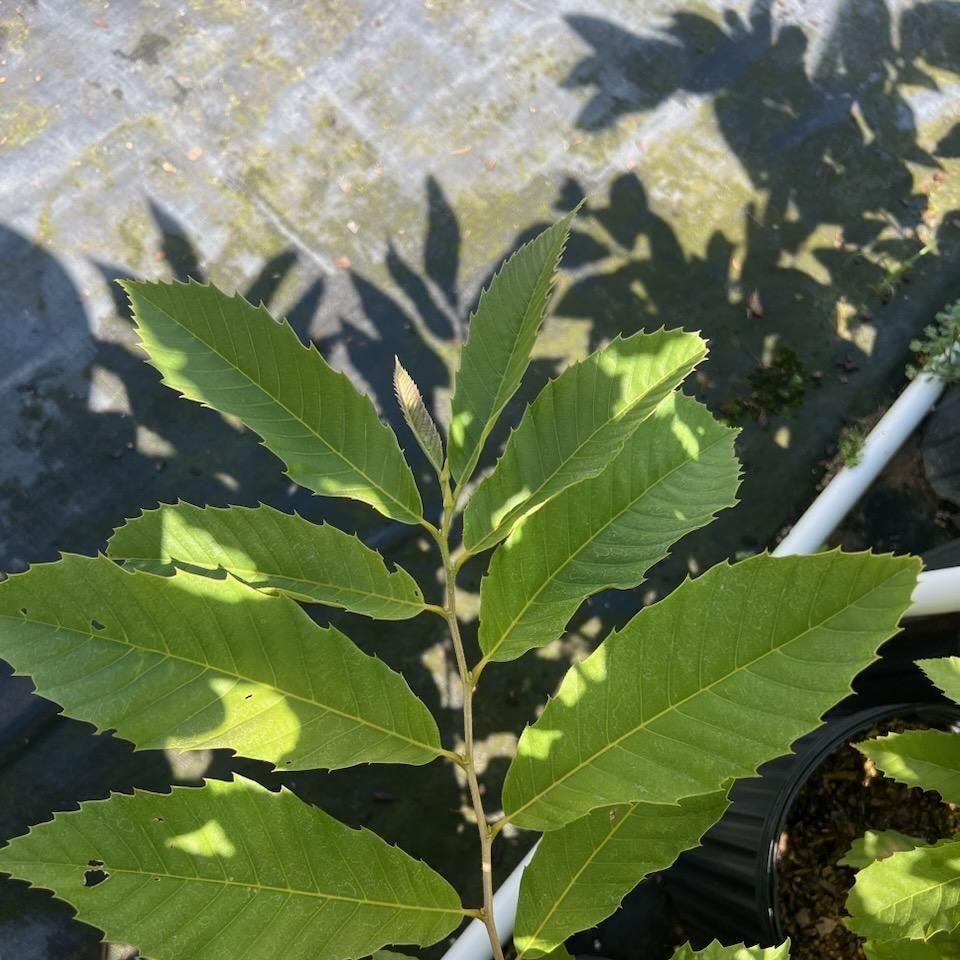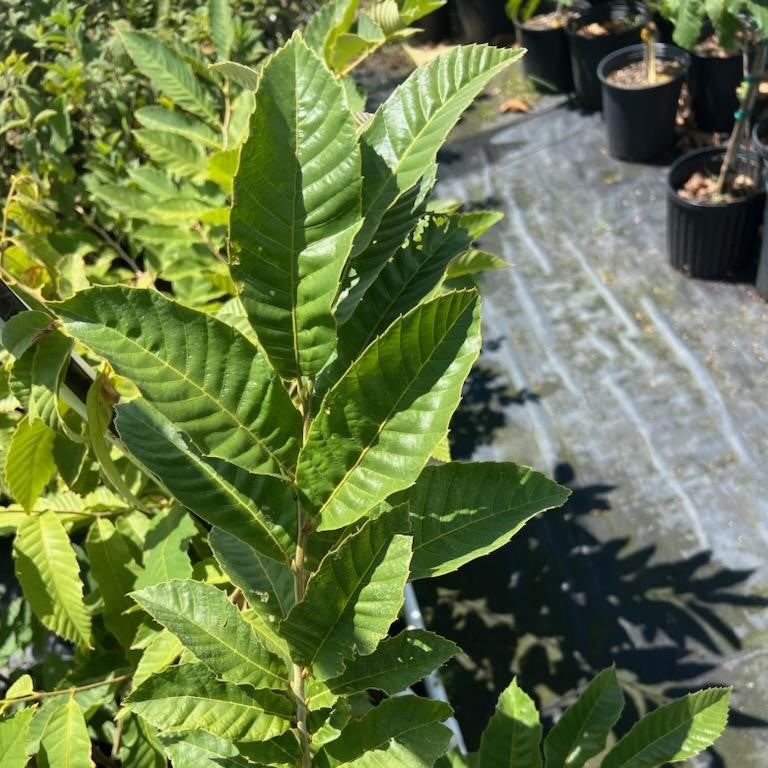Limited Quantities - Reserve Now For Fall
Chinese Chestnut Tree
Chinese Chestnut Tree
Couldn't load pickup availability
Castanea mollissima
Chinese Chestnut Tree
The Chinese Chestnut Tree is a hardy, productive nut tree valued for its sweet, edible chestnuts, broad canopy, and high disease resistance. Native to China and widely planted in the U.S. as an alternative to American Chestnut, this species offers both ecological benefits and reliable harvests for home growers and restoration projects alike.
Excellent for edible landscapes, wildlife plots, and reforestation efforts, the Chinese Chestnut thrives in warm climates with well-drained soil and full sun, producing abundant nuts and dense shade year after year.
Chinese Chestnut Tree Overview
| Attribute | Details |
|---|---|
| 🌿 Botanical Name | Castanea mollissima |
| 🏷️ Common Names | Chinese Chestnut |
| 🌳 Mature Height | 30–50 feet |
| 🌐 Mature Width | 30–40 feet |
| 📈 Growth Rate | Moderate to fast (1.5–2.5 feet per year) |
| ⏳ Lifespan | 50–100+ years |
| 🧊 USDA Zones | 4–8 |
| ☀️ Sun Preference | Full sun (essential for nut production and tree vigor) |
| 🧱 Soil Type | Well-drained loam, sandy, or slightly rocky soils |
| ⚖️ Soil pH | Slightly acidic to neutral (5.5–6.5) |
| 💧 Water Needs | Moderate; drought-tolerant once established |
| 🌰 Nut Type | Large, sweet, edible chestnuts with easy-to-peel shells |
| 🌸 Flower Color | Pale yellow catkins; mid to late spring blooming |
| 🐝 Pollination | Requires cross-pollination; plant two or more trees |
| 🌿 Growth Habit | Rounded crown with spreading branches |
| ↔️ Spacing | 35–50 ft for nut production; 25–30 ft for windbreaks |
| 🏡 Landscape Uses | Edible landscapes, wildlife plots, shade tree, reforestation |
| 🧹 Maintenance Level | Moderate |
Environmental Benefits
🌰 Produces nutrient-rich food for humans and wildlife
🐿️ Supports deer, turkeys, squirrels, and pollinators with nuts and flowers
🌳 Provides dense summer shade and large-scale reforestation potential
🌎 Offers blight resistance and ecosystem restoration potential
Pros & Cons
| ✅ Pros | ⚠️ Cons |
|---|---|
| 🌰 Delicious, easy-to-peel nuts for roasting or cooking | 🐝 Requires a second tree for pollination and nut set |
| 🌿 Resistant to chestnut blight affecting American varieties | 🌾 Does not tolerate poorly drained or heavy clay soils |
| 🌞 Grows well in full sun and warm climates | ✂️ Needs regular pruning when young to establish strong form |
| 🏞️ Excellent for wildlife support and habitat restoration | 🌸 Pollen-heavy blooms may cause allergies for sensitive individuals |
| 🌱 Adaptable to many soils and drought-resistant | ❄️ Nut yields can vary with late frosts or extreme drought |
Planting & Care Guide
🛁 Water thoroughly before and after planting; maintain even moisture in early years
🕳️ Dig a hole twice the width of the root mass; plant at original soil depth
🌾 Mulch 2–3 inches deep around base to conserve moisture and control weeds
💦 Water weekly during establishment; reduce once tree is mature
✂️ Prune in late winter to shape and improve air circulation
🧪 Fertilize in early spring with a low-nitrogen, slow-release tree formula
The Chinese Chestnut Tree is a productive, long-lived nut tree that brings shade, sustenance, and ecological strength to every planting. Whether you're establishing a homestead orchard, creating wildlife habitat, or restoring native tree cover, this chestnut is a resilient, rewarding choice with beauty and bounty to match.
Share
